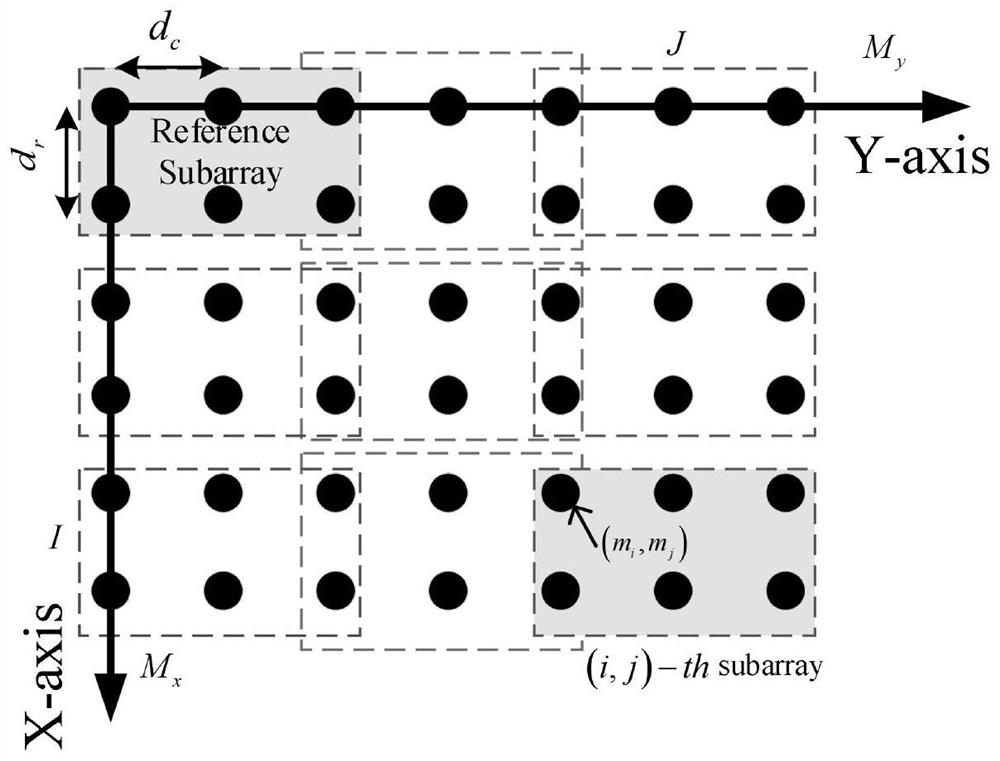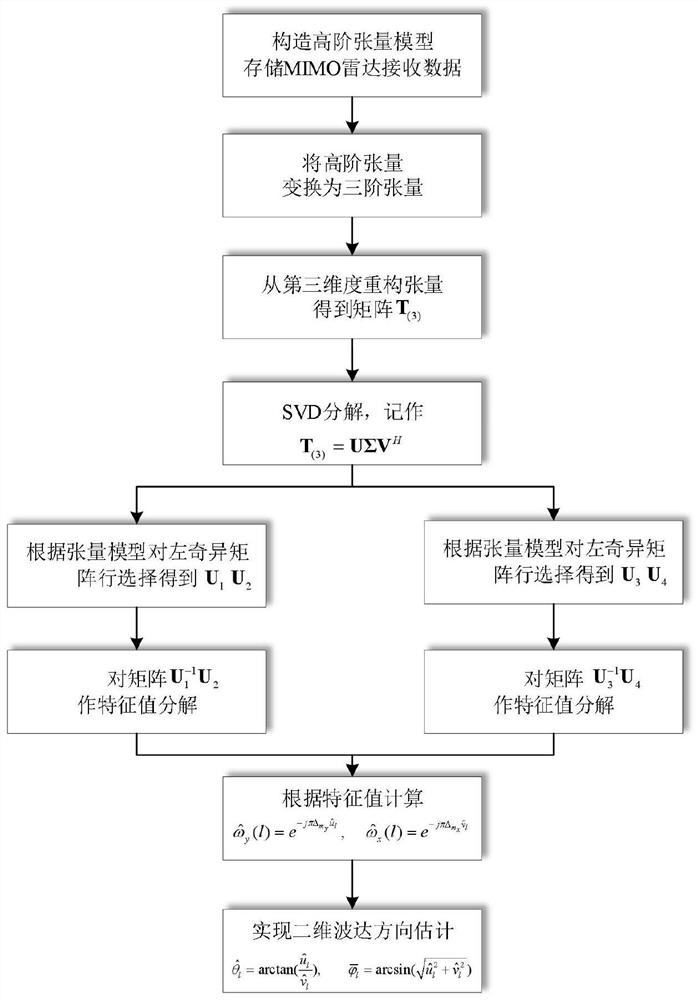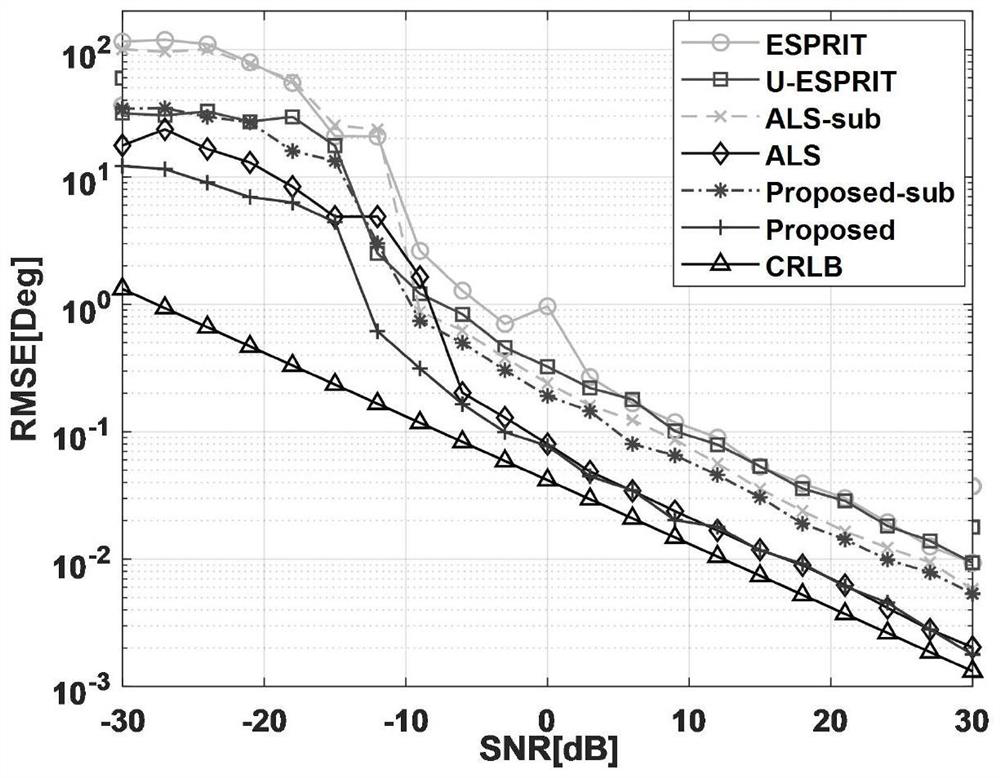MIMO radar two-dimensional direction of arrival estimation method based on constraint tensor decomposition
A tensor decomposition and direction estimation technology, applied in the field of radar, can solve the problems of unstable convergence and high computational complexity, and achieve the effect of high resolution and good resolution accuracy.
- Summary
- Abstract
- Description
- Claims
- Application Information
AI Technical Summary
Problems solved by technology
Method used
Image
Examples
Embodiment Construction
[0074] The present invention will be described in detail below with reference to the accompanying drawings and examples.
[0075]The core idea of the present invention is: first derive the high-order tensor model of the MIMO radar receiving data with a plurality of identical transmit sub-arrays, and demonstrate that its corresponding factor matrix has a Vandermonde (Vandermonde) structure constrained by the array structure, and then pass The matrix reconstruction and singular value decomposition of the high-order tensor ensure that the left singular matrix inherits the Vandermonde structure. Finally, an ESPRIT-like algorithm is used to estimate the phase information of the target direction from the sub-matrix of the left singular matrix, and then Implements two-dimensional direction of arrival estimation.
[0076] Technical principle of the present invention is: as figure 1 As shown, consider a MIMO radar with M=M x m y transmitting array elements uniformly distributed on...
PUM
 Login to View More
Login to View More Abstract
Description
Claims
Application Information
 Login to View More
Login to View More - R&D Engineer
- R&D Manager
- IP Professional
- Industry Leading Data Capabilities
- Powerful AI technology
- Patent DNA Extraction
Browse by: Latest US Patents, China's latest patents, Technical Efficacy Thesaurus, Application Domain, Technology Topic, Popular Technical Reports.
© 2024 PatSnap. All rights reserved.Legal|Privacy policy|Modern Slavery Act Transparency Statement|Sitemap|About US| Contact US: help@patsnap.com










